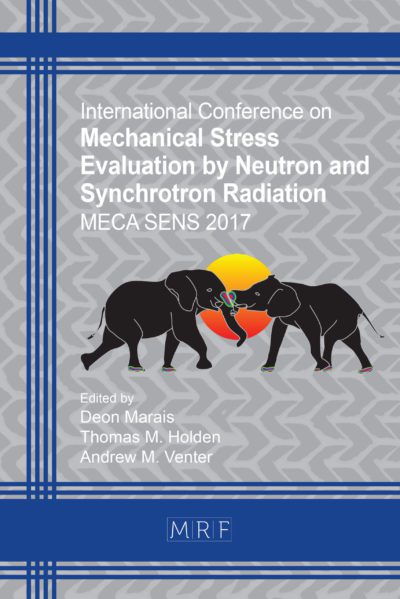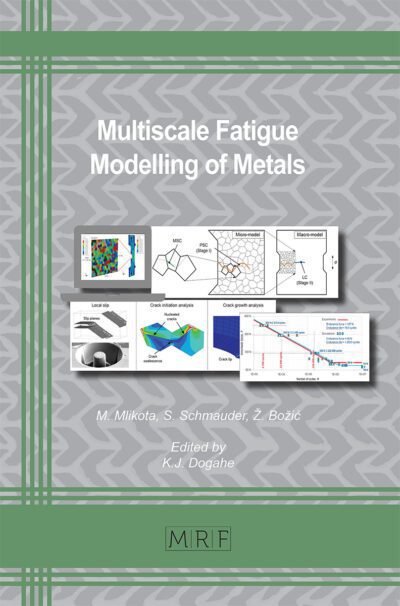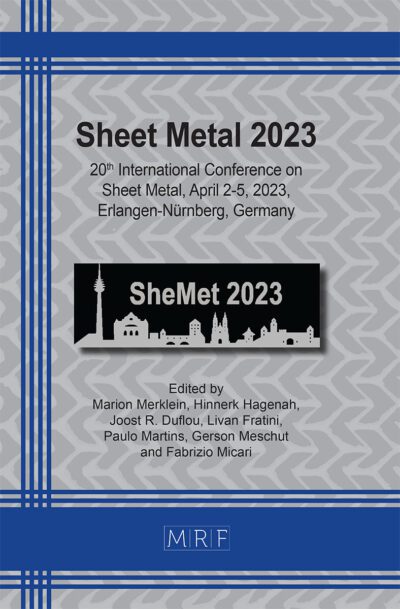Enhancing Materials Science through Computer Image Analysis and IQA Approaches
PIWOWARCZYK Adam, JASTRZĘBSKA Ilona
download PDFAbstract. Computer image analysis allows for various object detection and classification as well as conducting measurements on microscope images. Technological development, including the application of artificial intelligence solutions, speeds up the classification of large data sets. In the context of image analysis, an essential issue is image quality assessment (IQA). Applying the tools of image analysis, or artificial intelligence, linked with the appropriate IQA approach reveals the opportunity to develop materials with better functional and technological properties more sustainably and effectively.
Keywords
Image Analysis, Materials Science, Microstructure, Image Quality Assessment, Machine Learning
Published online 9/1/2023, 6 pages
Copyright © 2023 by the author(s)
Published under license by Materials Research Forum LLC., Millersville PA, USA
Citation: PIWOWARCZYK Adam, JASTRZĘBSKA Ilona, Enhancing Materials Science through Computer Image Analysis and IQA Approaches, Materials Research Proceedings, Vol. 34, pp 374-379, 2023
DOI: https://doi.org/10.21741/9781644902691-43
The article was published as article 43 of the book Quality Production Improvement and System Safety
![]() Content from this work may be used under the terms of the Creative Commons Attribution 3.0 license. Any further distribution of this work must maintain attribution to the author(s) and the title of the work, journal citation and DOI.
Content from this work may be used under the terms of the Creative Commons Attribution 3.0 license. Any further distribution of this work must maintain attribution to the author(s) and the title of the work, journal citation and DOI.
References
[1] J. Pietraszek, A. Goroshko. The heuristic approach to the selection of experimental design, model and valid pre-processing transformation of DoE outcome, Adv. Mater. Res. 874 (2014) 145-149. https://doi.org/10.4028/www.scientific.net/AMR.874.145
[2] J. Pietraszek, N. Radek, A.V. Goroshko. Challenges for the DOE methodology related to the introduction of Industry 4.0, Prod. Eng. Arch. 26 (2020) 190-194. https://doi.org/10.30657/pea.2020.26.33
[3] R.A. Fisher. The Arrangement of Field Experiments, J. Ministry of Agric. 33 (1926) 503-515. https://doi.org/10.23637/rothamsted.8v61q
[4] K. Hinkelmann, O. Kempthorne. Design and Analysis of Experiments. Vol. 1. Introduction to Experimental Design. Wiley, Hoboken, 2008.
[5] R.H. Myers, D.C. Montgomery, C.M. Anderson-Cook. Response Surface Methodology: Process and Product Optimization Using Designed Experiments. Wiley, Hoboken, 2009.
[6] R.L. Mason, R.F. Gunst, J.L. Hess. Statistical design and analysis of experiments: with applications to engineering and science. Wiley, Hoboken, 1989.
[7] I. Jastrzębska, A. Piwowarczyk. Traditional vs. Automated Computer Image Analysis—A Comparative Assessment of Use for Analysis of Digital SEM Images of High-Temperature Ceramic Material, Materials 16 (2023) art. 812. https://doi.org/10.3390/ma16020812
[8] M. Ludwig et al. Corrosion of magnesia-chromite refractory by PbO-rich copper slags, Corrosion Science 195 (2021) art. 109949. https://doi.org/10.1016/j.corsci.2021.109949
[9] L. E. Vivanco-Benavides et al. Machine learning and materials informatics approaches in the analysis of physical properties of carbon nanotubes: A review, Computational Materials Science 201 (2022) art. 110939. https://doi.org/10.1016/j.commatsci.2021.110939
[10] X. Chen et al. Recent advances and clinical applications of deep learning in medical image analysis. Medical Image Analysis, Volume 79 (2022) art. 102444. https://doi.org/10.1016/j.media.2022.102444
[11] A. Singh et al. Real-time intelligent image processing for security applications. J. Real-Time Image Process. 18 (2021) 1787-1788. https://doi.org/10.1007/s11554-021-01169-w
[12] A. Piwowarczyk, L. Wojnar. Perspektywy rozwoju wykorzystania metod analizy obrazu w zagadnieniach bezpieczeństwa i zapewnienia jakości, in: R.Ulewicz, R.Dwornicka (Eds.) Praktyczne aspekty zarządzania produkcją i bezpieczeństwem, Wyd. PK, Kraków, 2019, pp.83-91.
[13] A. Piwowarczyk, L. Wojnar. Machine learning versus human-developed algorithms in image analysis of microstructures. QPI 1 (2019) 412-416. https://doi.org/10.2478/cqpi-2019-0056
[14] A. Gądek-Moszczak, R. Filipowska. Efficiency and accuracy of simulated microstructure images generated by machine learning. 14th WCCM-ECCOMAS Congress 2020, January, 11-15, 2021: virtual congress (2021) art. 270129. 10.23967/wccm-eccomas.2020.129
[15] R. Tadeusiewicz, P. Korohoda. Komputerowa analiza i przetwarzanie obrazów, Wydaw. Fundacji Postępu Telekomunikacji, Kraków, 1997.
[16] J.C.F. Russ, B. Neal, The Image Processing Handbook, 7th Ed., CRC Press, Boca Raton, 2016. https://doi.org/10.1201/b18983
[17] L. Wojnar, Analiza obrazu. Jak to działa? Wyd. PK, Kraków, 2020. ISBN 978-8366531529
[18] S. Klosterman, Data Science Projects with Python. Second Edition, Packt Publishing, Birmingham, 2021. ISBN 978-1838551025
[19] J. Yang et al. No-reference image quality assessment focusing on human facial region, Signal Process. Image Commun. 78 (2019) 51-61. https://doi.org/10.1016/j.image.2019.05.011
[20] Y.H. Liu, K.F. Yang, H.M. Yan. No-Reference Image Quality Assessment Method Based on Visual Parameters, J. Electron. Sci. Technol. 17 (2019) 171-184. https://doi.org/10.11989/JEST.1674-862X.70927091
[21] I. Jastrzębska et al. Crystal structure and Mӧssbauer study of FeAl2O4. Nukleonika 60 (2015) 47-49. https://doi.org/10.1515/nuka-2015-0012
[22] I. Jastrzębska, J. Szczerba, P. Stoch. Structural and microstructural study on the arc-plasma synthesized (APS) FeAl2O4-MgAl2O4 transitional refractory compound, High Temp. Mater. Process. 36 (2017) 299-303. https://doi.org/10.1515/htmp-2015-0252
[23] Z. Ren, F. Fang, N. Yan, Y. Wu. State of the Art in Defect Detection Based on Machine Vision. Int. J. Pr. Eng. Man.-G.T. 9 (2022) 661-691. https://doi.org/10.1007/s40684-021-00343-6

































